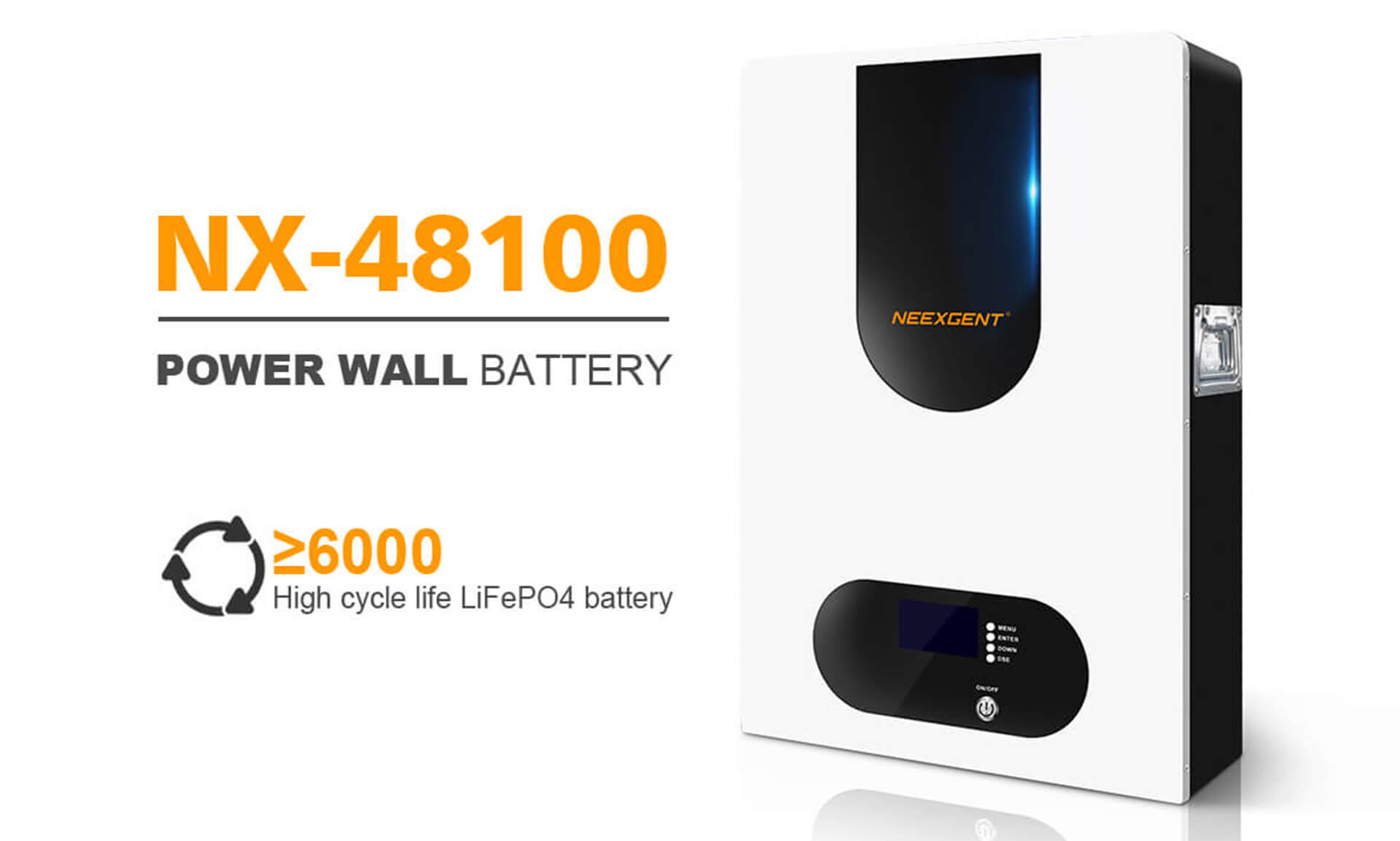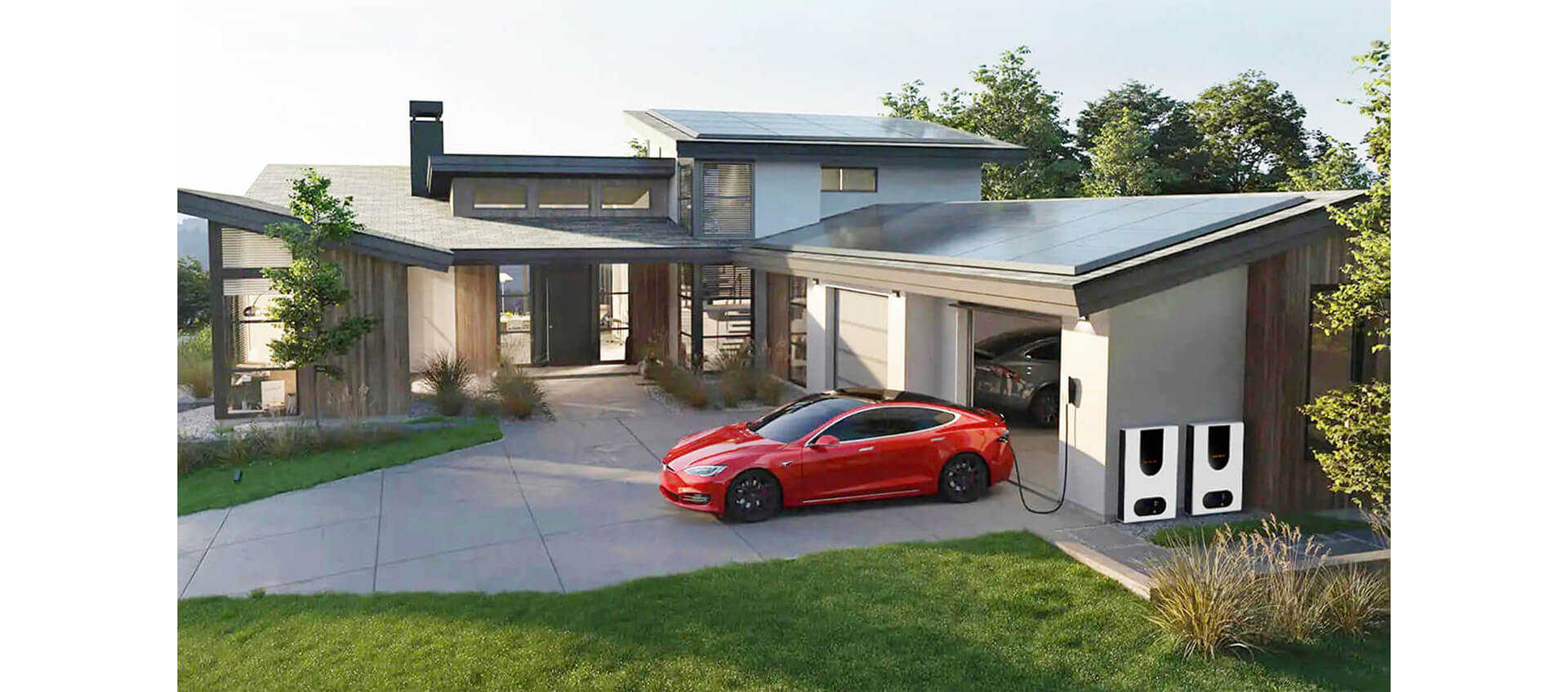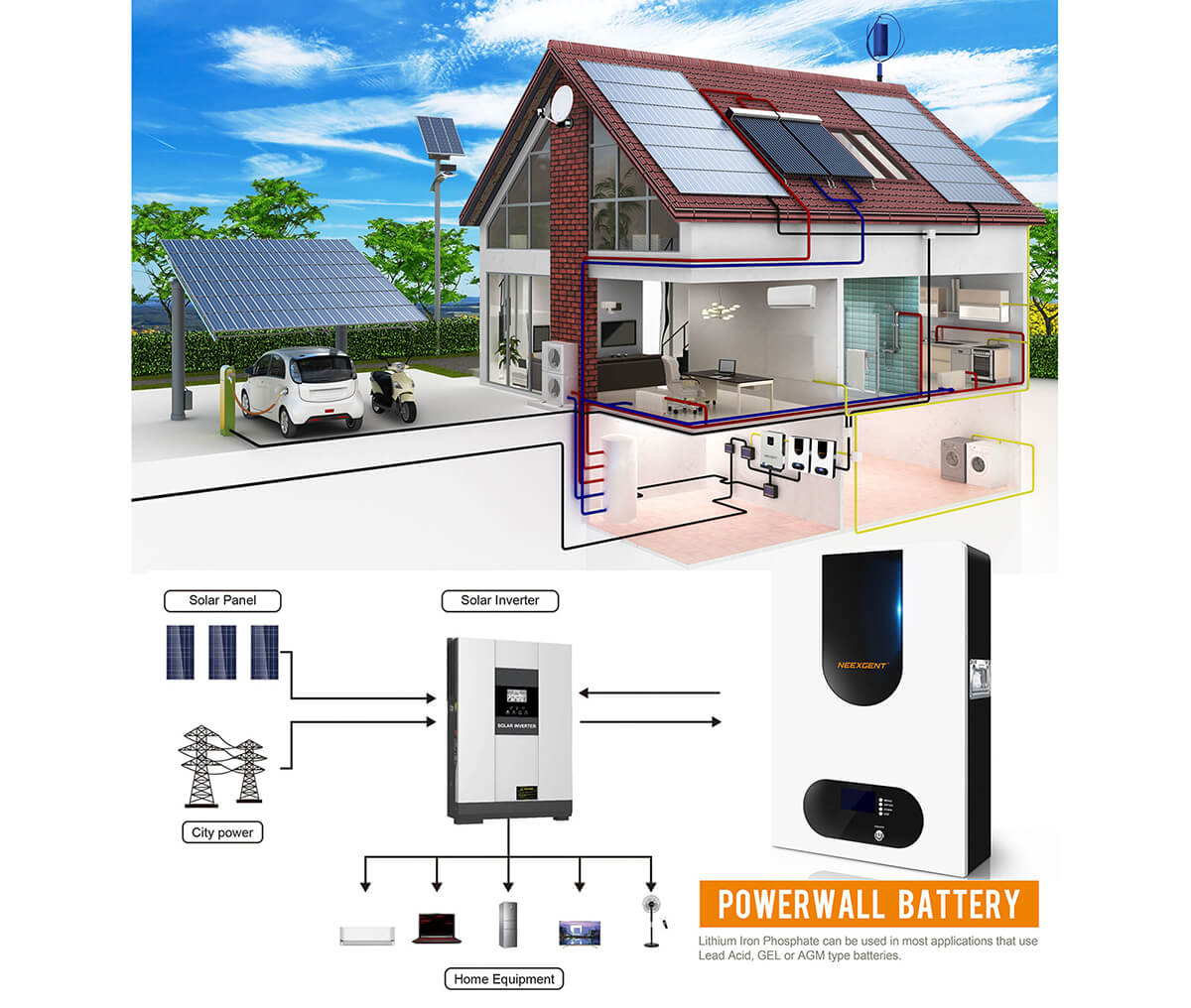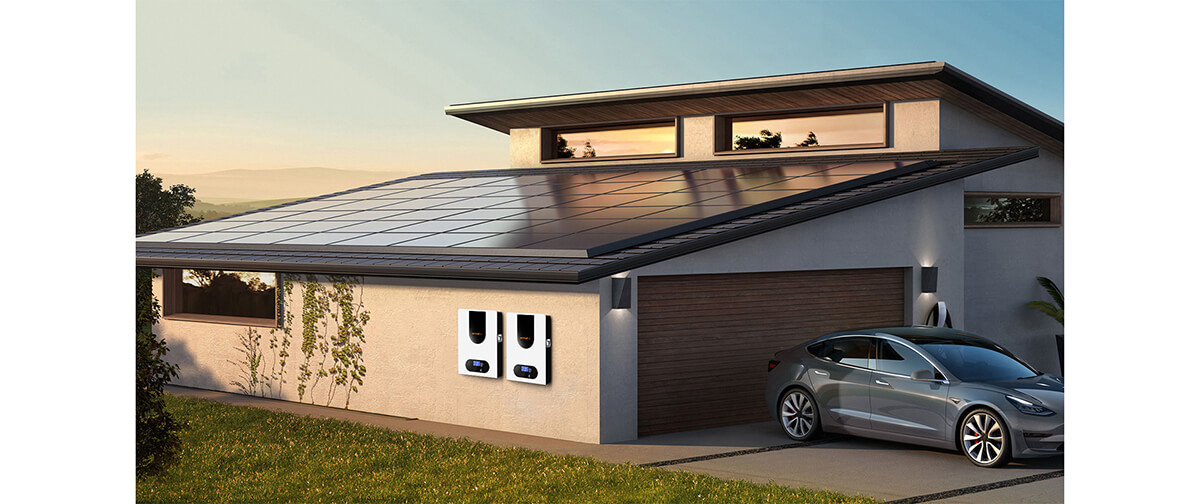
NX-48100 POWER WALL BATTERY
1. Determine your power needs and compatibility:
Before you install a powerwall battery, you'll need to figure out how much energy you use on a regular basis, and whether your home's electrical system is compatible with a battery backup. This might involve looking at your past electricity bills, assessing your typical energy usage patterns, and consulting with an electrician or solar energy professional.
Before installing a powerwall battery, it's important to determine your power requirements and ensure that your home's electrical system is compatible with a battery backup. Here are some steps to take:
- Review your electricity bills: Look at your past electricity bills to get an idea of how much energy you use on a daily, weekly, and monthly basis. This will give you a sense of how much energy you need to store in a battery to meet your needs during power outages.
- Assess your energy usage patterns: Take note of when you use the most energy during the day, and whether your usage fluctuates significantly throughout the week or month. This information can help you plan for how to use your battery effectively, such as scheduling it to charge during off-peak hours when electricity is cheaper.
- Consult with a solar energy professional: Consider consulting with a professional who specializes in solar energy and battery backup systems. They can help you determine the appropriate size and capacity of a powerwall battery for your home, and assess whether your existing electrical system is compatible with a battery backup.
- Check for any regulatory or permitting requirements: Depending on where you live, there may be regulatory requirements or permitting processes that you need to follow in order to install a battery backup system. Be sure to research any local regulations and obtain any necessary permits before proceeding with installation.
- Consider any special requirements for backup power: If you plan to use your powerwall battery as a backup power source during extended power outages, you may need to consider additional factors such as how long the battery can sustain your critical loads (e.g. refrigerator, medical equipment, etc.) and whether you need a generator or other backup power source as a backup to the backup.

2. Choosing a suitable location and installing a powerwall:
Once you have determined that a powerwall battery is a good fit for your home, you will need to choose a suitable location for the battery and install it safely. Choosing a suitable location and installing a powerwall battery is a crucial step in ensuring that your battery operates safely and effectively. Here are some key factors to consider:ation and installing a powerwall battery is a crucial step in ensuring that your battery operates safely and effectively. Here are some key factors to consider:
Exposure to sun and wind: Powerwall batteries are designed to be installed both indoors and outdoors, but it's important to choose a location that is protected from direct sunlight and strong winds. Extreme temperatures can reduce the battery's performance and lifespan, so a cool, shaded area is ideal.
- Ventilation clearance: Like any battery, the powerwall requires adequate ventilation to dissipate heat and prevent overheating. Make sure the location you choose has sufficient clearance around the battery to allow for proper air flow. The manufacturer's installation guidelines will provide recommended clearance distances for your specific battery model.
- Ease of maintenance: While powerwall batteries require minimal maintenance, occasional inspections and cleaning may be necessary. Choose a location that is easily accessible for maintenance purposes, without any obstacles that could make it difficult to inspect or service the battery.
- Structural considerations: Powerwall batteries are relatively heavy and require a secure mounting surface to prevent movement or damage. Make sure the location you choose is structurally sound and can support the weight of the battery, as well as any additional equipment that may be required for installation.
- Compatibility with your electrical system: Depending on your home's electrical system, you may need to install additional equipment such as a transfer switch or sub-panel to connect the powerwall battery to your existing wiring. Make sure the location you choose allows for easy access to the necessary electrical components.

3. Connect the powerwall to your home's electrical system:
The installation process typically involves several steps, including installing a transfer switch, connecting the battery to your home's electrical panel, and testing the system to ensure that everything is working as it should.
One of the most critical steps in connecting a powerwall to your home's electrical system is installing a transfer switch. This device is designed to detect when there is a power outage and automatically switch your home's power supply from the grid to the powerwall battery. This ensures that critical loads in your home, such as medical equipment or refrigeration, stay powered during an outage. Installing a transfer switch is a complex process that requires careful planning and expertise, so it's essential to work with a licensed electrician who has experience with this type of installation.
Another key step in connecting a powerwall to your home's electrical system is connecting the battery to your home's electrical panel. This involves running wiring from the battery to the panel and making the necessary connections to ensure that the battery can supply power to your home when needed. Your electrician will need to carefully assess your home's electrical system and make any necessary modifications to ensure that the battery is properly integrated into your existing infrastructure.
Powerwall is connected to your home's electrical system, it's important to monitor its performance to ensure that everything is working as it should. This may involve adjusting the battery's charging schedule or making changes to your home's electrical usage patterns to optimize performance. By working with a licensed electrician and following the manufacturer's installation guidelines, you can be sure that your powerwall is installed safely and correctly, giving you the peace of mind of knowing that your home will be protected during power outages.

4. Configure and monitor the powerwall system:
Once the powerwall is installed and connected to your home's electrical system, you'll need to configure the system to optimize its performance and ensure that it meets your energy needs. This may involve setting up a charging schedule that takes advantage of off-peak energy rates or adjusting the battery's discharge settings to ensure that it provides power during times of peak demand.
Monitoring your powerwall system is also critical to ensuring that it operates safely and efficiently. Many powerwall systems come with built-in monitoring features that allow you to track your energy usage and monitor the status of the battery. By monitoring your powerwall system, you can identify any issues or malfunctions early on and take corrective action before they become bigger problems.
Configuring and monitoring powerwall systems is relatively easy thanks to the availability of user-friendly interfaces and software. Most powerwall systems come with intuitive software that allows you to view real-time data on energy usage, battery charge levels, and system performance. By taking advantage of these tools and working closely with your installer, you can optimize your powerwall system and ensure that it continues to meet your energy needs for years to come.

5. Consider additional solar and energy management options:
While installing a powerwall battery is an effective way to store energy and protect your home during power outages, it's worth considering other energy management options that can help reduce your overall energy consumption and carbon footprint. One option to consider is installing solar panels, which can provide a renewable source of energy to power your home and charge your powerwall. By pairing solar panels with a powerwall, you can further reduce your dependence on the grid and save money on energy costs.
Another option to consider is upgrading your home's insulation and HVAC system. Poor insulation and outdated HVAC systems can contribute to energy waste and high energy bills. Upgrading your home's insulation and HVAC system can help reduce your energy consumption and costs, while also making your home more comfortable and environmentally friendly.
There are a variety of other energy management solutions to explore, such as smart thermostats, energy-efficient appliances, and home energy audits. By taking a comprehensive approach to energy management, you can reduce your energy consumption, save money on energy costs, and minimize your impact on the environment. Working with a qualified energy professional can help you identify the best energy management solutions for your home and goals.










